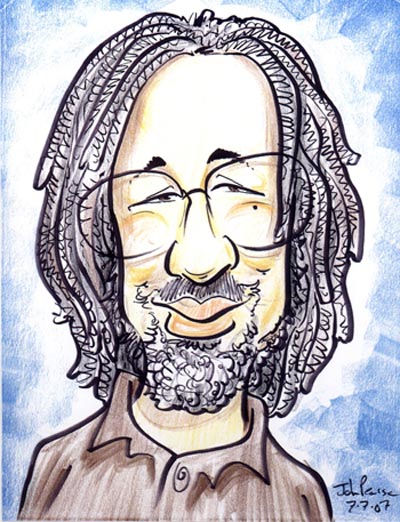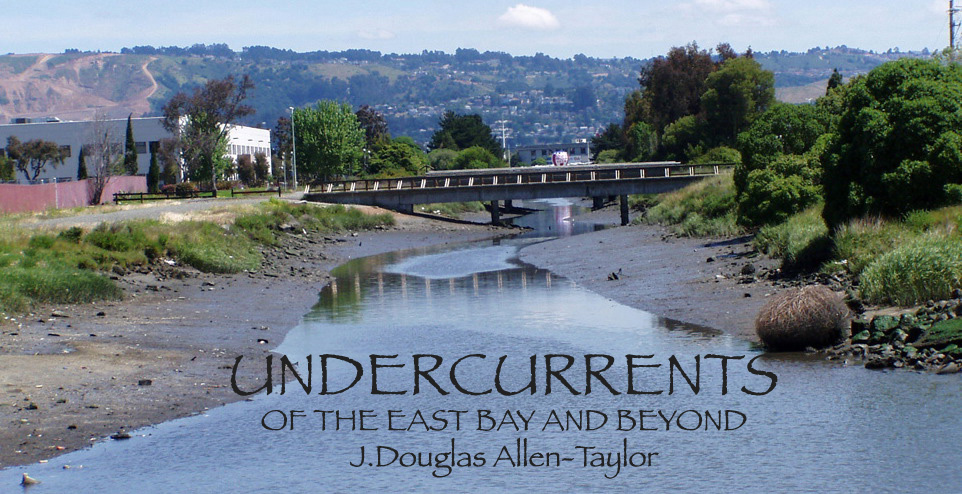|
|
REVITALIZING OAKLAND'S UPTOWN-DOWNTOWN AREA ON AN AFFORDABLE BUDGET
November 30, 2007
Last summer, I happened to be walking with an out-of-town couple who had come, early, to a Paramount Theater concert and, with some time to kill, wanted to know if I knew of any good places in the downtown area to get something to eat. I did, actually. Several places. But Jack London Square seemed too far for them to walk and, with little city signage to help them along the way, I thought they might be mistrustful of any directions a strange local might give them that took them off Broadway to Old Oakland or Chinatown. They got a hot dog from one of the vendors who works outside the Paramount events, I think, and an opportunity was lost.
Two weeks ago, I wrote that the Dellums Administration should concentrate its retail development plans away from downtown and into the existing community commercial districts. By that suggestion, however, I did not mean to imply that downtown should be abandoned. The Jerry Brown 10K plan was designed to attract new residents into the downtown area so that retail would follow. I would suggest that while we are waiting for the retail, the Dellums Administration ought to adopt a different strategy: make the existing downtown attractive for both residents and visitors, to the point that there is a sufficient critical mass of shoppers and eaters and foot traffic to get the attention of the retail businesses that are so important to our tax needs.
And the key point is that such a plan will require far fewer city dollars than was used, say, to subsidize Forest City or the Fox renovation. What is needed to revitalize Oakland’s downtown is not so much money, after all, but rather a change of thought process, purpose and direction.
Let’s go back to the out-of-town couple coming to the Paramount Theater event, and looking for somewhere to eat downtown, beforehand. What could the city have had in place, downtown, to help this couple find what they wanted, and what the city—almost desperately—wants them to be able to find?
First-off, a free, downtown shuttle would be nice.
AC Transit used to run one several years back, but the service became one of the casualties of the transit district’s ongoing budget problems. My suggestion is that the City of Oakland needs to revive that service as a necessary component for downtown revitalization, either in connection with AC Transit or, if AC Transit is unwilling, the city either running its own shuttle service or contracting out to some other firm.
Such a shuttle could run a route along the downtown areas where the city wants to direct the most dollars to, and continue until all of the venues close. One suggestion would be to start somewhere around the uptown area—where the city is anticipating new residents moving into the Forest City Project—running past both the Paramount and the Fox, when the Fox begins operating as an entertainment venue, going down Broadway past the City Center and the Marriott, making a loop west through Old Oakland on its southward trip to Jack London Square and then east through Chinatown on its way back uptown. A component might also include a trip down 14th Street to the beginning of Lake Merritt and back, particularly as the city begins to move on the Measure DD improvements to provide an overground, visible, and walkable connection of the western end of the lake to the estuary. That would allow a pass-by of both the Oakland Museum and—if we ever open that up again as an entertainment venue—the Kaiser Convention Center. The city could provide uptown-downtown maps which include a list of places along or near the shuttle route to eat, to shop, and to take in entertainment. The city—or AC Transit—could also provide drivers who could answer appropriate questions. Yes, this would be an extra cost to the city. But the city already spends far more money on developer subsidies directed towards downtown revitalization. An uptown-downtown free shuttle would seem a necessary component to that revitalization, at a relatively minor cost.
But what about the encouragement of foot traffic?
Well, first off, signage would help, considerably. Wherever we think large groups of people are likely to congregate—and then, again, periodically along the way—the city should erect signage in the uptown-downtown area which directs pedestrians to various sections. The signage would not necessarily advertise specific businesses but, instead, would let pedestrians know that “this” way, for example, lies Chinatown, with its collection of shops and restaurants, and “that” way lies Old Oakland, with its bars and grills, world food outlets, bookstores, and other amenities. Periodically spaced, unmanned kiosks where brochures can be placed—something you almost always see in cities interested in catering to tourism—would also help. One ought not to have to find the Chamber of Commerce headquarters or duck into the lobby of the Marriott, if you know where the Marriott is, to find such things.
That being said, making the walk more amenable and inviting between these destination points would also be a plus.
The most serious impediment to encouraging foot traffic between City Center and Jack London Square is the 880-Broadway overpass—or underpass, depending on your point of view—between 6th and 5th streets. With the marked police car parking lot directly adjacent, and the police headquarters only a couple of blocks away, this is probably one of the safer stretches to walk in Oakland. But it doesn’t appear that way. Instead, the walk under the overpass is dark and foreboding and appears dangerous, and the aging collected pigeon droppings along the sidewalk give it a distinctly unsanitary appearance as well. Despite the inviting view of the city’s lighted Holiday Tree clearly visible at the entrance to Jack London Square only five blocks away, it is easy to imagine city visitors coming from the Marriott early in the evening, stopping at the overpass, peering down the street, deciding that, no, there’s probably nothing of particular interest or value down that direction, and turning back.
This is clearly a case where a lemon should be turned to lemonade. Increasing the lighting under the 880 overpass would be a distinct plus. So, perhaps would be tacking up poster boards along the pilings on each side and using them as mural space for local artists. Cleaning up the birdshit on a regular basis is, well, a necessity. An added touch might be to theme the underpass as a gateway arch and passage, with appropriate signage over the top in each direction.
The suggestion of mural art through the underpass invites another suggestion, that the city should encourage walking through the uptown-downtown area not only as a way to get to a particular destination, but also for the pleasure of the walk itself and the things seen along the way. Several Oakland neighborhoods are already demonstrating the power of that process by having entire sections of houses with spectacular holiday light displays—the area near Seminary Avenue and MacArthur being one such example—so that folks make it a habit every year to drive the kids over and through, just to have a look.
In such a way, Oakland could encourage walking in the uptown-downtown area, just for walking’s sake.
West Oakland business advocate Steve Lowe long ago suggested that the city use the many vacant store windows along lower Broadway between the overpass and Jack London Square to house doll and toy displays. The idea was never picked up by the city, and one wonders why. It appears to be one of those win-win-win situations, all the way around. The city gets the uptown-downtown walking traffic it desperately wants, the displaying collectors and artisans get free publicity and exposure, and the owners of the vacant buildings get a raise in their property values as the size of the crowds increase.
But such displays ought not to stop with dolls and toys. In several places in its downtown, the City of Berkeley sponsors art displays in vacant windows. Oakland ought to follow suit, with themed displays along selected walking routes, some of them cultural, some of them historic, some of them seasonal, changing them periodically so that pedestrians would be encouraged to come back, from time to time.
There are other, social concerns of course, about who Oakland has been trying to attract to its uptown-downtown area and who it has been trying to keep out, and our inability as a city to come to some sort of terms with our young Black and Brown population. Resolving that problem would go a long ways towards resolving the problem of an underused uptown-downtown. But that’s an issue we’ve often talked about, and a subject for another time.
Meanwhile, I’m no city planner, so I haven’t done a cost breakdown of the above suggestions. But I often walk or ride in the uptown-downtown area, and I see its deficiencies. I often hear the complaints and concerns that there are not enough places in the area to shop or eat. My concern is that the city is not doing enough to steer the public to the places that are already there. These are my suggestions of how to alleviate that problem. I am sure the professional city planners in Oakland can come up with a far better list, if they put their heads to it.
|

